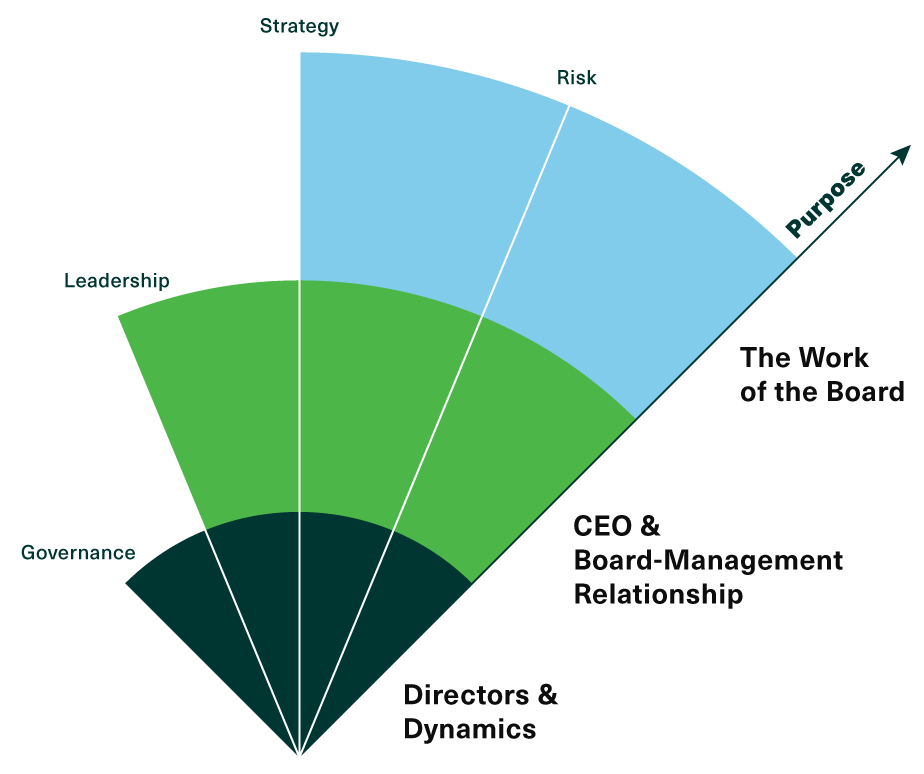You may have noticed a few changes to our look and feel over the past few months at Watson – we’ve been busy launching our refreshed visual brand and website. Our new look is meant to bold, confident, and approachable, just like us. Something you may notice right away is our new logo. While we hope you find it as catchy as we do, there’s more to it than meets the eye. Our logo actually says a lot about how we think about boards and good governance. Allow us to explain…

At Watson, we recognize that three layers make up the world of the Board and apply to everything it does. Boards that struggle to recognize the importance of these layers often feel complacent, misaligned, or lack trust. On the other hand, when all three layers are healthy and aligned, directors feel confident, prepared, and engaged to shape the organization’s future and tackle its most important issues. Board effectiveness in the real world means qualified, diverse leaders at the board and management level, supported by sound structures and practices, who work collaboratively with the right focus on the right issues; our three-layered model helps explain how all these elements interact. Let’s take a closer look at each one:
Directors & Dynamics

CEO & Board-Management Relationship

The CEO is a critical lever for the board in shaping the future of the organization; they set the tone at the top. They hire, reward, motivate, and inspire the people who work there, and they organize the team to develop strategy, manage critical risks, and create the right kind of culture for the organization to be successful in achieving its purpose.
The Board-Management relationship is critical – the board needs to be confident that it has the right CEO to lead the organization and that the CEO has the right people in place at a management level, and the board needs to interact well with the CEO and management team with the appropriate degree of engagement given the circumstances and materiality of the issues.
The Work of the Board
Boards have limited time to do their work and must choose where to focus and how deeply to be involved in these areas. Boards that govern with intention are mindful of when they make decisions, when they collaborate with the CEO and management team, when they oversee, and when they don’t need to be involved.
 A strong consensus has evolved as to the types of activities in which boards should be involved. A board’s focus typically includes:
A strong consensus has evolved as to the types of activities in which boards should be involved. A board’s focus typically includes:
- Aligning around the organization’s purpose and vision that shape its strategies and objectives
- Taking an enterprise-wide approach to understanding and managing key risks
- Ensuring it has the right people, financial, and other resources in place to achieve those strategies and safeguarding those resources
- Ensuring strong leadership by the CEO or other senior leader(s)
- Overseeing organizational culture and talent
- Monitoring performance in key areas
- Ensuring the organization meets its legal obligations
The work of the board has also evolved to capture new areas that have a significant impact on the organization’s purpose, strategic priorities, and risk profile. For example, the oversight of leadership and culture has expanded as organizations recognize the importance of diversity, equity, and inclusion in successfully achieving their purpose. As the impact of climate change on organizations and their ability to meet their purpose becomes better understood, environmental stewardship has also emerged as an important area of oversight.
Bringing It All Together
Each of these layers build on the previous one. When a board has the right composition of skills and competencies and works well together, they are more likely to have a constructive relationship with the CEO and Management. In turn, the board is better enabled to focus on the right issues and engage on those issues at the right level.
 As we said earlier, these layers apply to every issue boards deal with. So, let’s take an example. Suppose a board is concerned about its organization’s readiness and planning for how generative AI will reshape its industry. What questions might your board consider in each of these layers to assess the situation?
As we said earlier, these layers apply to every issue boards deal with. So, let’s take an example. Suppose a board is concerned about its organization’s readiness and planning for how generative AI will reshape its industry. What questions might your board consider in each of these layers to assess the situation?
| Directors & Dynamics |
|
| CEO & Board-Management Relationship |
|
| The Work of the Board |
|
Organizations, no matter the size or sector, play a major role in people’s lives as the backbone of our communities and economy. As the guiding body of these organizations, boards play a central role in shaping their success. Every decision a board makes impacts the organization and how it operates in the world.
In addition to inspiring our logo, our governance model describes the layered world of the board, connected ultimately by the organization’s purpose. In our work with hundreds of boards from different sectors across Canada, we’ve seen many boards focus predominantly on the outermost layer – The Work of the Board – when often the stewardship challenges boards struggle with stem from issues in the inner two layers. By paying careful attention to all three layers and staying grounded in the organization’s purpose, boards can shape brighter future for their organizations and for our society.

)
)
)